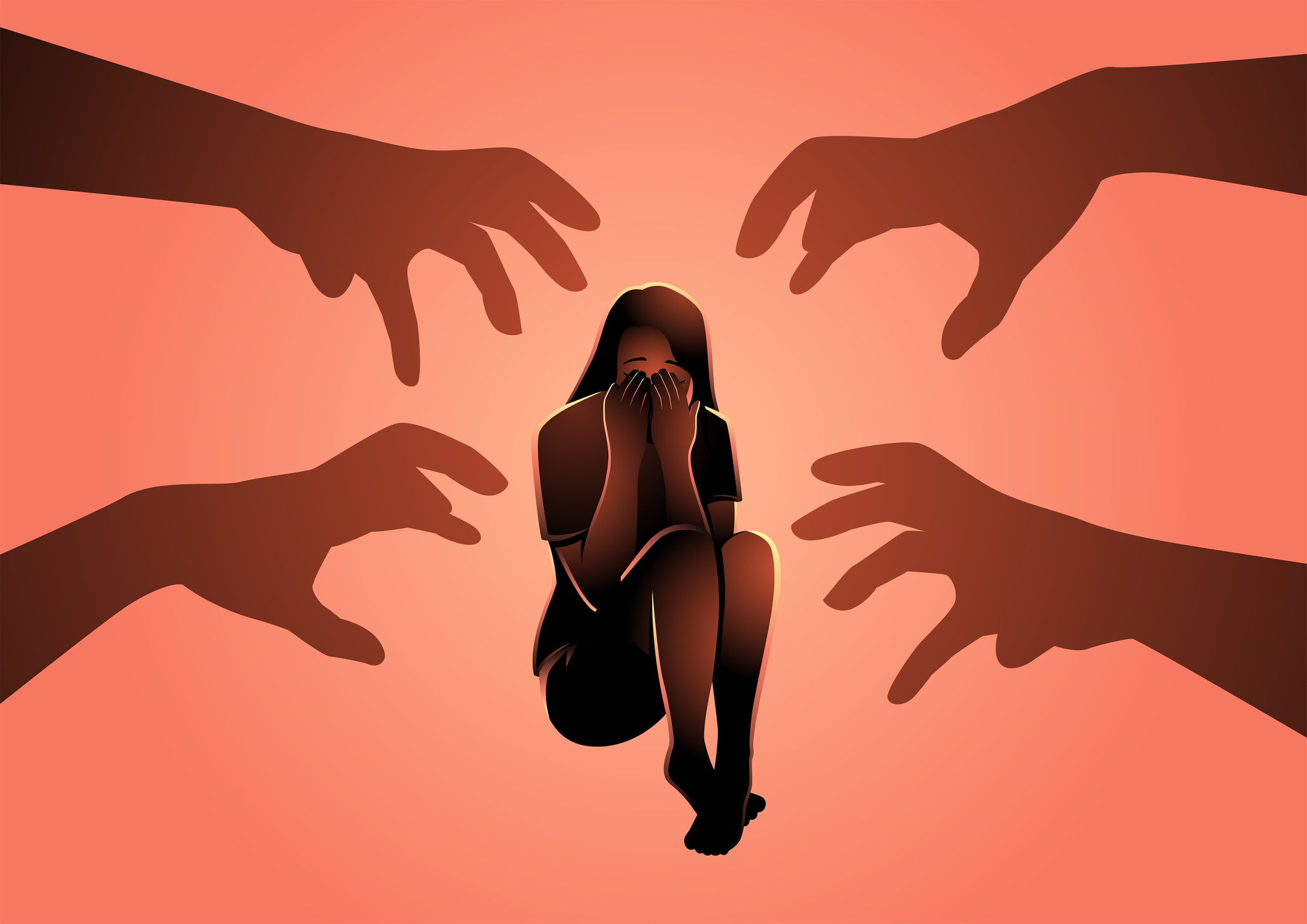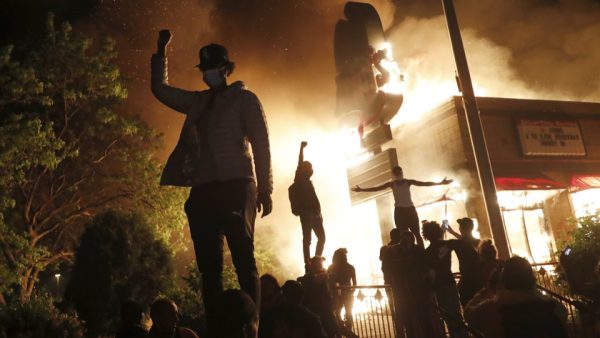Exploring the Democrats’ chokehold on modern women.
Let Men Be

In defense of sex-segregated times and places.
What follows is an excerpt from Mary Harrington’s new book, Feminism Against Progress.
It’s impossible for the erased males to command any respect from the people…and still less from their women. – Bronze Age Pervert
Where have all the good men gone? Well, part of the answer is that, outside the elite and laboring classes, they’re increasingly out-competed by women. Men predominate today at the very top and very bottom of the socioeconomic layer cake, in super-elite and dangerous or physically strenuous work. But many sectors are now majority-female—and this is concentrated in the middle.
This majority-female mid-tier knowledge class produces the priestesses of cyborg theocracy. Their bio-libertarian worldview seeks to replace embodied men and women with the tech-enabled, self-fashioning, post-human “person.” This is the worldview that saw Bristol University student Raquel Rosario Sánchez disciplined by university officials in 2021 for organizing a feminist consciousness-raising session that explicitly excluded males, despite the fact that the right to do so is protected under the 2010 Equality Act. And the same worldview reaches impressive heights of absurdity, and cruelty, where it colonizes settings in which embodied sex clearly remains a factor. Recall, for example, the ACLU campaign to force New Jersey’s prisons to accommodate males who identify as women, and the two women subsequently impregnated by a male fellow-inmate at New Jersey’s Edna Mahan Correctional Facility.
Gender-critical feminists have worked fiercely to defend some exceptions to this abolition of sex, in contexts such as women’s prisons and sports teams where physical embodiment still matters. They’re right to do so. But there’s also a cognitive dissonance at work here, which parallels the common gender-critical feminist enthusiasm for biomedical mastery of sex difference in some contexts but not others. It’s a dissonance usually pointed out only by embittered anons in the manosphere: that is, there exists a precedent for current assaults on all-female spaces, and it was driven by the women’s movement.
The 20th century saw a multitude of “boys’ clubs” go co-ed, in the interests of women’s equal participation in public life. As we’ve seen, since Harriet Taylor Mill many liberal feminists took the (male-standard) public-facing liberal subject, and with him the public culture created by men, as the default aspirational templates for all liberal subjects. If you accept this premise, of course excluding women from social networks crucial to public-facing liberal subjects looks like men reserving goods for themselves that rightfully ought to be available to “people.” And from this it follows that for women to have a fair crack at personhood, men must move up and make room for women in their social spaces.
Reactionary feminism goes further than the gender-critical kind. “Gender neutrality” is inimical to all our interests, for it aims to replace men and women with fungible, interchangeable “people” composed of fungible, interchangeable body parts. This means defending sex segregation alongside gender-critical feminists, especially at the margins where it’s self-evidently cruel, destructive or absurd. But if we’re to avert the Meat Lego horrors that follow in the wake of “gender neutrality,” and also re-establish solidarity between the sexes, we need to extend sex realism to every domain where it’s salient.
In those social strata where work is knowledge-based, there’s little material reason for the sexes to be segregated. In such contexts, ambitious women have long sought to challenge sex segregation. For even today, such spaces matter in public life: a University of Bristol study showed that informal networks such as private members’ clubs or golf clubs were more influential in securing directorships than formal qualification for a position. The Garrick, for example, one of the last all-male London members’ clubs, is currently subject to a legal challenge by women demanding admission. Cherie Blair recounts her outrage when, as a young barrister in 1976, she was left standing outside the club while her supervisor took Tony Blair, her fellow-pupil, inside the Garrick, saying: “It’s outrageous that so little progress has been made since then.”
But until trans activism began inserting males into all-female spaces, the dissolution of sex segregation remained asymmetric. All-male groups have largely turned co-ed, while at least some equivalent institutions for girls remained single-sex. One paradigmatic instance of this dynamic is the Boy Scouts. Founded in 1908 by Robert Baden-Powell, with the aim of teaching boys the skills and mindsets needed for good citizenship, it was rapidly followed in 1910 by the Girl Guides, a separate organization that, like the Scouts, rapidly expanded beyond Britain. Scouts and Guides existed in tandem as single-sex organizations until 1976 when, impelled by the demand from girls for access to the adventurous experiences and outdoor fun offered by scouting, the first Scout troops began to admit girls. By 2007, all scout troops were compelled by the umbrella organization to make provision for girls to join, and by 2011 girls were joining at a higher rate than boys.
Girl Guide groups, meanwhile, still exclude boys (or at least boys who identify as such). This asymmetry provokes little comment, at least overtly: for example, one 2019 Guardian article celebrated the rapid rise in girls’ participation in scouting, especially across diverse communities and ethnicities. The father of a new scouting recruit, Florence, says, “We don’t like the idea of gender segregation [which] doesn’t happen in the real world.” The same article, meanwhile, quotes Guiding deputy chief executive Ruth Marvel, who states that while Girl Guiding has considered going mixed, internal polling reveals the overwhelming consensus of their membership is that they’d prefer to remain girls-only.
The main justification for this asymmetry is that there exists an imbalance of power, status and resources between men and women, and as such women need single-sex support to flourish while the same isn’t true for men. As Marvel argues: “What we offer is more relevant than ever in terms of giving girls opportunities to genuinely explore who they are and what they want to be, and without having anyone telling them that that’s not OK.”
At a material level, too, women’s lesser physical strength and vulnerability to male violence and sexual aggression is cited to justify the preservation of female single-sex spaces. This is the rationale that drove radical feminists to found domestic violence shelters, rape support groups and other all-female support bodies in the mid-20th century: the very single-sex spaces now threatened by the cyborg call to give “gender” precedence over embodiment.
Working-Class Blues
Those women who protest, like Cherie Blair, at the negative professional consequences of exclusion from elite male social groups, are very much creatures of the upper crust. And provided they never look outside elite social strata, those knowledge-class women glaring enviously at the men who still bestride the professional heights might be forgiven for thinking male supremacy is as robust as ever. Men still dominate the highest-status professions, and women remain under-represented in those board-level positions attainable by the right golf club membership. In the elite professional circles frequented by a Cherie Blair or a Hillary Clinton, men are still obviously dominant. From this perspective, the ongoing battle to dissolve sex segregation still has a long way to go—and as such, single-sex spaces even in less privileged social strata than that frequented by Garrick members must be subject to the same desegregation. A bit of collateral damage is well worth the greater goal of “ending patriarchy”—which is to say, the impossible task of eradicating all differences between the sexes.
Further down the food chain, though, departure from the industrial era into the cyborg one wasn’t a moral shift so much as a brute economic one. Offshoring replaced manufacturing work with less secure or well-paid positions in warehouses or the gig economy. And this has resulted in a devastating loss of agency, purpose and dignity that’s disproportionately affected working- and lower-middle-class men, even as female employment in the same social strata has risen.
Can we make the case that anything is changed for non-elite men as a result of losing access to opportunities for all-male socialization? Perhaps. The evolutionary biologist Joyce Benenson argues that women and men socialize in distinct ways, a disparity that’s a mix of innate bias and peer socialization but is fundamentally structured around evolved strategies for survival. This in turn, she argues, creates a set of behavioral biases reproduced both by social norms, but also by our evolved sexed preferences. The upshot of these distinct strategies, Benenson claims, is that human males tend towards social patterns in which they cooperate with peers and compete with out-groups. In contrast, human female survival strategies turn on excluding other females in the search for mates, then enlisting peers and elders to help with the care of dependents.
If Benenson is right, a single-sex group going co-ed will have to adjust its patterns of socialization. Does this matter? Well, in 2022, Merseyside farmer Lisa Edwards received fierce backlash when she accused the 94-year-old Liverpool Agricultural Discussion Society of sexism for restricting membership to men. After 90% of group members voted to remain single-sex, group member Olly Harrison argued: “There are conversations that are different between men and women.” Given the high incidence of mental distress and suicide in farming, Harrison claimed, and the fact that some conversations among men can only happen away from the presence of women, “To take away a space to chat is wrong.”
Over recent decades, across many sectors beyond farming, there’s been a steady rise in “deaths of despair”—the bleak term for deaths from suicide, drug and alcohol abuse and other self-inflicted conditions associated with loneliness and lack of hope. Such deaths are most prevalent among working-class men, and social scientists attribute the grim phenomenon to the loss of dignity and economic opportunity. But can we entirely rule out the possibility that this could also be linked to the concurrent decline in male friendship?
According to one 2021 study, in 1990 55% of American men said they had at least six close friends. By 2021 only 27% reported six or more close friends: half that number. Loneliness has rocketed: 15% of American men have no close friendships at all, a fivefold increase since 1990. This leaves many men dependent on a partner for social connection and wider friendship, which in turn leaves them desperately vulnerable if the relationship ends. Suicide is the biggest killer of UK men under 45, and 75% of all suicides are men. The highest-risk group for suicide in the UK is male divorcees, followed by widowers. In contrast, there’s no correlation between suicide risk and marital status for women.
Restoring the well-being of working-class men is straightforwardly in women’s interests—specifically, of those women who might otherwise form families with such men. It’s right in absolute terms, of course, to care about the well-being of a large part of the world’s population. Every woman has male friends, partners, children and loved ones. But a brute calculation of ordinary women’s interests should also support a call for more and better jobs for men; more dignity; less porn and video games; more responsible men forming families.
Not the Same
Two things follow from this. Firstly, that in some contexts there’s nothing anti-feminist (at least not for a reactionary feminist) about defending men’s interests as distinct from those of women, and in conjunction with them. And secondly, that this extends to supporting a measured rollback of radical “gender neutrality” across the board, in favor of sex segregation where appropriate—for both sexes. For in some contexts, the gender-critical arguments for segregation by sex are every bit as applicable when the sexes are reversed. The most obvious of these is an historically all-male setting, where men’s greater physical strength and propensity for violence are not a bug but a feature: the military.
In search of a male perspective on whether (or how) all-male social dynamics are affected by a shift to co-ed environments, I interviewed Matt, 34, a former soldier from Missouri. His description of an all-male U.S. Special Forces unit maps onto Benenson’s description of male social groups, as structured by a dominance hierarchy ordered towards cooperation in defeating an out-group. As he tells it, the team was characterized by “a natural hierarchy” that formed “often outside of the rank structure.” Proper behavior in that hierarchy was policed indirectly, by “teasing and ribbing” which served to “spotlight weakness, selfishness, dishonesty and disloyalty” and demand better behavior. This social dynamic forged a powerful in-group: over time, he says, “we became a well-oiled machine.”
Matt told me that in most contexts he welcomes the sexes mingling. But integrating women in such groups, he recalls, would “immediately disrupt the balance within the group and introduce a level of dysfunction.” “I’ve seen great female soldiers,” he says, but mixing the sexes changed the social dynamic in ways that radically impaired their effectiveness, resulting in a “breakdown in trust and cohesion” that was “just devastating.” That is, the extreme situation of military combat called for a measure of realism about limits to radical gender-neutrality, whether in material terms or in terms of the social dynamic. And Matt’s description of how shifting from all-male to co-ed fighting units affected cohesion shows striking parallels to the gender-critical feminist case against trans women in female prisons.
In both settings, members of the minority sex were perceived to be receiving special treatment. One inmate at Edna Mahan complained that trans women received priority for hormone treatment, and were given make-up and other personal items for free where female inmates had to pay for them. Correspondingly, as Matt tells it, in his military unit male leaders treated the women differently: “Sometimes it was paternalistic, other times it was that they just weren’t taken seriously, and sometimes it was exploitative.”
In both settings, too, sexual desire swiftly and disastrously complicated an already high-pressure social setting. For while same-sex desire will inevitably find some expression in a single-sex prison or fighting unit, self-declared same-sex-attracted individuals are only an estimated 3.1% of the population. By contrast, the vast majority of members of both sexes are heterosexual, meaning the probability of sexual interactions—consensual or otherwise—will escalate considerably in a co-ed setting. And in a high-pressure environment such as a prison or battlefield, the complexities this introduces can be explosive.
As Matt describes it, “Almost always the female would have a sexual relationship with someone in the group, and then move onto another, and another.” In one unit, Matt says, “[O]ne of the girls had had a sexual relationship with the commander, the first sergeant, and several of the soldiers, all in a six-month period—and she was married.” Morale was, he said, further undermined by the jealousy and suspicion felt by soldiers’ wives at the presence of female soldiers. Again, Matt’s account parallels the gender-critical case for sex realism in some settings: accounts are already emerging of the explosive consequences of introducing heterosexual desire into women’s prisons: harassment, reported rapes, pregnancies and even heterosexual marriages between inmates.
By the same token, normative differences between male and female physical strength, and propensity for violence, mean introducing members of the opposite sex into either female prisons or all-male fighting units predictably increases the risk to the wider community—in mirroring ways. In the context of female prisons, Helen Joyce notes the striking difference in male and female offending patterns: bluntly, men are orders of magnitude stronger and more physically violent than women. Very simply, then, introducing males into an all-female prison increases the danger to the women there.
Conversely, in a fighting unit on the military frontline—a setting that’s historically almost always been all-male—physical strength and a capacity for violence are (as Matt notes) positive traits. Women are statistically less likely to be very strong or very violent; adding them to such a unit may thus increase the danger to the surrounding males by physically weakening the team overall. In the interests of making the social status accorded to soldiers an equal-opportunity thing, the physical standards required of new recruits have been diluted; but on the battlefield, Matt says, this can be lethal. “They were smart enough, no doubt, but they just didn’t have the physical capacity and they couldn’t be trusted to carry a 90-lb ruck with ammo and, if the situation merited it, the machine gun.” And this can be a matter of life or death: as Matt puts it, the cost of substandard performance on a battlefield “is ultimately people getting killed.”
Both settings, then, ignored clear normative differences between the sexes in terms of behavior and physical attributes, while disregarding—again for egalitarian reasons—the interpersonal complexities introduced by sexual desire. The results were painfully predictable, and just as vehemently disavowed by utopians in the name of progress. Instead, bio-libertarian true believers continue reordering public life to their own interests, via the bulldozer of “gender neutrality,” and dismissing male objections as reducible to mere misogyny.
Time Apart to Stick Together
If you think “progress” means making men and women completely interchangeable, perhaps you’ll shrug off elevated risks to a formerly single-sex community as a reasonable price to pay for broad positive changes. Against this, we might say with one gender-critical feminist on Twitter: “How many rapes of women in prison by ‘trans women’ is ok for you?” It’s beyond the scope of this chapter to assess whether an egalitarian military is a positive end goal—but if you believe it is, we might ask with Matt: how many additional maimed or dead soldiers can you justify on the road to that end goal?
We could read gender-critical feminists, or soldiers who prefer all-male fighting units, simply as bigots and reactionaries. But in truth they’re realists. Reactionary feminism diverges from the gender-critical kind only in extending the logic of measured sex realism to all-male spaces as well as all-female ones. This is particularly important where it comes to advocating for the interests of less wealthy men, whose suffering should concern us all.
But even acknowledging this is now difficult, not least because male resentment of “gender neutrality,” and the asymmetric power dynamic it encodes, is now so virulent it often manifests precisely as hair-curling misogyny. The anonymous Bronze Age Pervert, for example, whose words form the epigraph to this chapter, attributes “the hypocrisy of all political life in our time” to “the liberation of women,” which he calls “an act of complete insanity.” Inspired by this and similar sentiments, then, it’s not difficult to find extreme masculinists online arguing that women should be compelled to withdraw entirely from public life, and reduced to a subordination far more total than any which has ever historically obtained in the West.
But even in the unlikely event that such proposals were to win out, this would do nothing to resolve our woes. For while, in Bronze Age Pervert’s view, feminism is “the revolt of women against the outrage of democracy,” it’s more accurate to say both feminism and democracy are facets of a wider social response to industrial technology. Given this, as with the more mainstream Right, any proposed resolution that amounts to “keeping everything in the social order the same, except what women do” would produce much the same social order, just swapping the current subculture of mutinously resentful men for one of women.
A more constructive way forward begins with reactionary feminists leading the way in celebrating those social structures in which younger men learn from older ones how to be in the world—without demanding to be included in them.
The American Mind presents a range of perspectives. Views are writers’ own and do not necessarily represent those of The Claremont Institute.
The American Mind is a publication of the Claremont Institute, a non-profit 501(c)(3) organization, dedicated to restoring the principles of the American Founding to their rightful, preeminent authority in our national life. Interested in supporting our work? Gifts to the Claremont Institute are tax-deductible.
A troubling trend of social isolation is afflicting young adults globally.
Society does kids a disservice by encouraging them to think of marriage and family as a distant goal.
Gender theory reduces women to the status of defective men.
Woke aggression won’t stop with speech.
The regime is desperate to impose polyamory.






